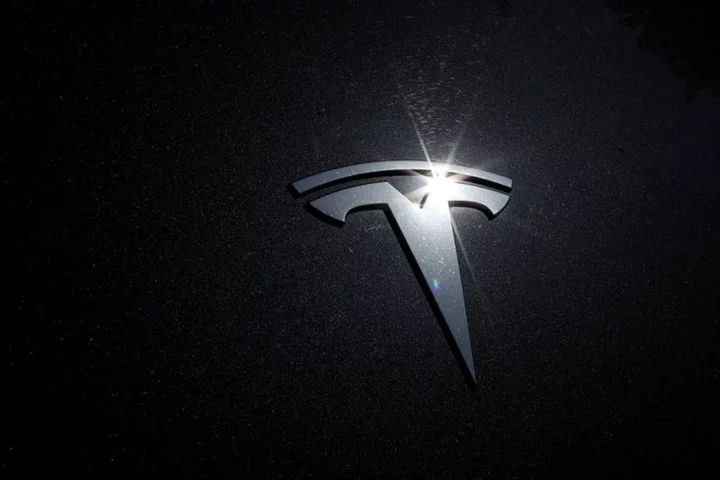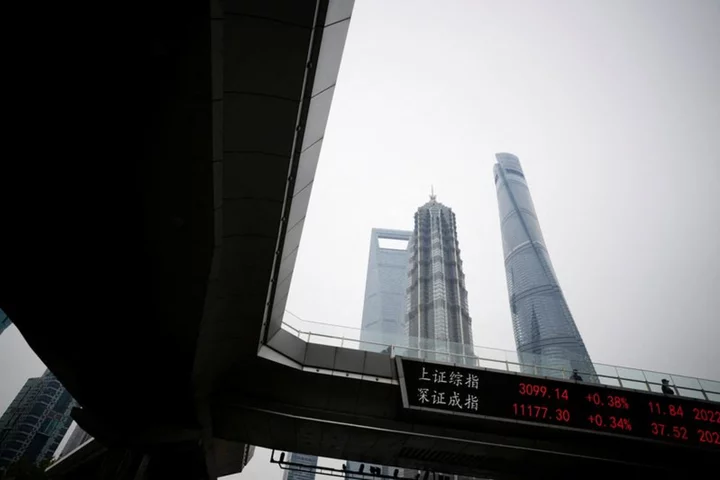About 300 million full-time jobs across the globe could be lost (or greatly diminished) due to the recent boom in artificial intelligence, Goldman Sachs estimates.
Some traders are betting on that AI boom. And they're starting to make decent returns, too.
What's happening: Shares of US chipmaker Nvidia (NVDA) are up a jaw-dropping 234% this year. Alphabet (GOOGL) is up 53% and Microsoft (MSFT) is up about 37%. That's no coincidence. AI stocks are soaring — the tech-heavy Nasdaq Composite is up by about 33% this year.
But what does it really mean to invest in an AI company? Some would say it's an investment in innovation and productivity. Others might argue that those are code words for replacing jobs with advanced technology.
Around two thirds of Americans are worried about artificial intelligence taking their jobs, according to a recent Morning Consult poll. And with good reason: About a fifth of all US workers have jobs in which the most important activities may be either replaced or assisted by AI, according to Pew.
What it means: The truth is that labor is expensive. And it's getting more expensive.
While inflation in the United States has come down and other data points to a cooling economy, the labor market has remained remarkably resilient.
That's a big deal to Federal Reserve officials, who have spoken publicly about their fears of a wage-price spiral — the feedback loop that drives inflation higher as people make more money and go out and spend it.
It could also be bad news for shareholders.
Labor costs increased by 9% year over year for S&P 500 companies last quarter and were equal to about 13% of revenues on average, Goldman Sachs analysts wrote in a recent report. They don't see those numbers easing anytime soon.
Not all companies are affected equally, found Goldman analyst Jenny Ma and her team.
Still, earnings for the median S&P 500 stock could increase by 18% if companies fully automated roles that can be performed by AI, replacing the wages and salaries of those employees, Goldman reported.
US companies do not typically disclose labor costs, but Goldman analyzed the wage expense for each company by compiling data on the number of each company's employees and the compensation of the median employee.
Betting against humans: Goldman has created an index that includes the companies in the S&P 500 with the lowest labor costs compared to revenue — Live Nation (LVY), Coca-Cola (KO), Tesla (TSLA), Nike (NKE), Netflix (NFLX) and Apple (AAPL) are among the 50 companies on the list.
For most of the year, they found, the basket underperformed the S&P 500 by nine percentage points. But things changed in June. The basket began to do very well and has outperformed the S&P 500 by three percentage points this summer.
"Economic data have consistently surprised to the upside, and with growth remaining resilient investors have shifted their focus to the risk of underlying inflation pressures," Goldman analysts wrote. These companies present an "attractive opportunity to hedge against this risk of sustained wage pressures and inflation."
Less exposure to human workers means higher profit margins, basically.
US financial regulators green lit new rules aimed at reducing the cost of bank failures
US financial regulators — the Federal Deposit Insurance Corporation, Federal Reserve and Office of Comptroller of the Currency — on Tuesday signed off on new rules to prepare large and regional banks for potential failure.
Notably, the new rules include a requirement that banks with at least $100 billion in assets issue around $70 billion in long-term debt to help absorb losses if they are at risk of becoming insolvent. This tends to occur when depositors fear their bank does not have enough money on hand, leading them to believe that their funds could get wiped out if they don't act fast to withdraw their funds.
That's a big deal, reports my colleague Elisabeth Buchwald.
The rule essentially seeks to shift the risk of a bank failure to bondholders rather than depositors. But to get bondholders to bear the cost of banks' potential failure, the banks would likely have to pay high interest rates. That would directly eat into banks' profitability, thereby lowering returns for shareholders.
Profits at mid-sized and regional banks have been taking a hit after the three bank failures forced them to pay higher interest rates on deposits to keep customers from withdrawing their funds.
The rule unveiled Tuesday comes on the heels of a separate capital-bolstering rule the three agencies introduced in July. That rule would also apply to banks with at least $100 billion in assets. Taken together, the two rules could inadvertently cause more harm than good, said Greg Baer, president and CEO of the Bank Policy Institute, a trade group representing many of the country's largest banks.
"Without careful consideration and calibration, there is a risk these proposals could damage the institutions they seek to strengthen and restrict vital financing to small businesses in the process," Baer said in a statement on Tuesday.
If the rule is finalized after the comment period ends on November 30, it would not go into effect until early 2025.
Amazon CEO tells employees to return to the office or their days may be numbered
Amazon workers don't have to return to office, but if they want to keep working from home they'll have to find employment elsewhere.
CEO Andy Jassy has told employees that they have to come in or ship out, a spokesperson for the company confirmed to CNN on Tuesday.
As part of his remarks, which Amazon shared with CNN, Jassy said during the event this month that while employees are entitled to disagree with the company's decision bringing workers back into the office and to criticize it, they are not entitled to disregard the policy.
He also predicted that for those who could not accept the policy, their prospects for remaining at Amazon appeared grim, reports my colleague Brian Fung.
Earlier this month, Amazon sent some employees an email indicating that the company knew they were not badging into the office as often as required.
Amazon's signal to workers that it is tracking their attendance comes after more than 1,000 of its corporate employees staged a walkout in May to protest the office policy. Organizers of the walkout have called the company's approach a "rigid, one-size-fits-all" mandate.









